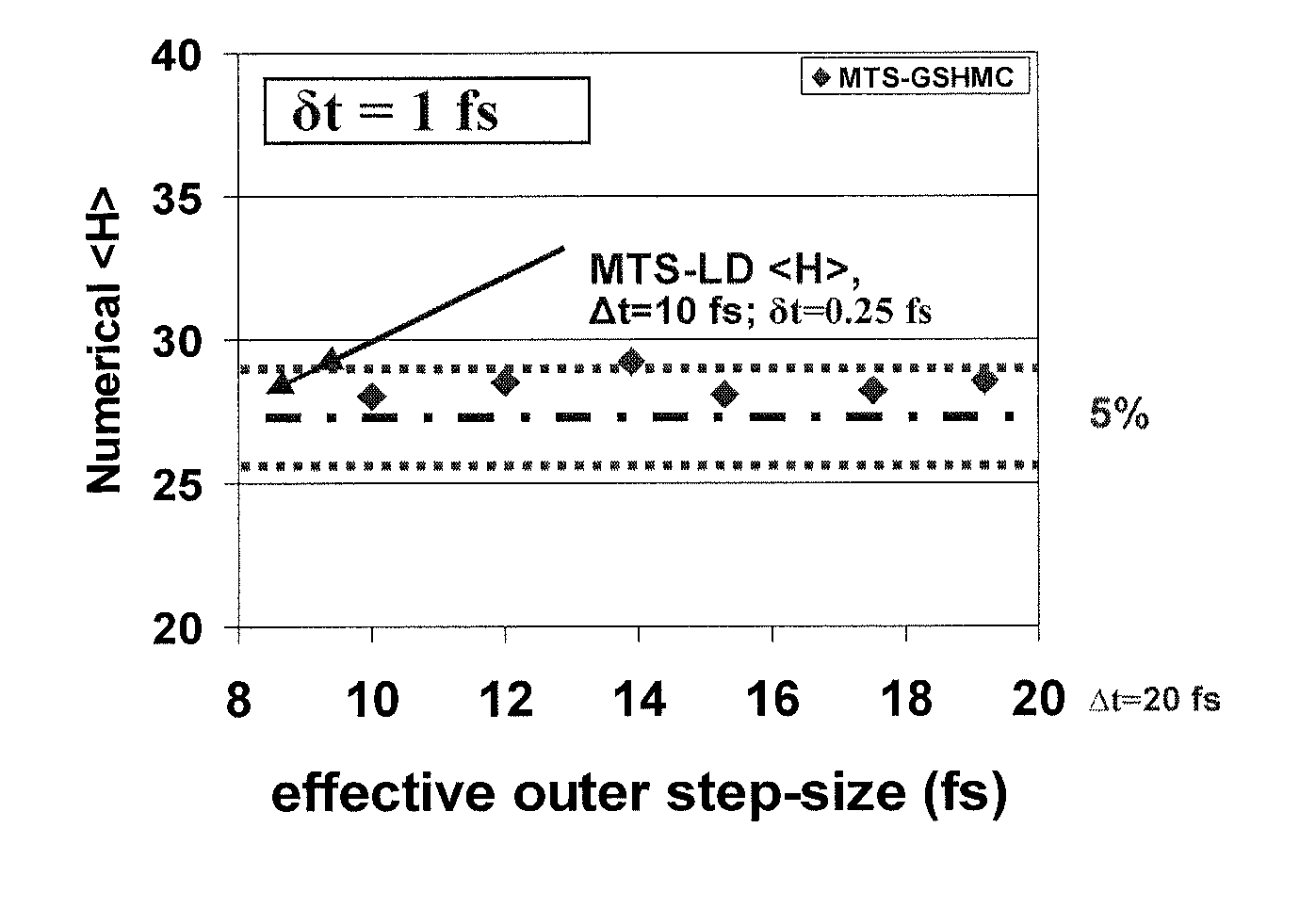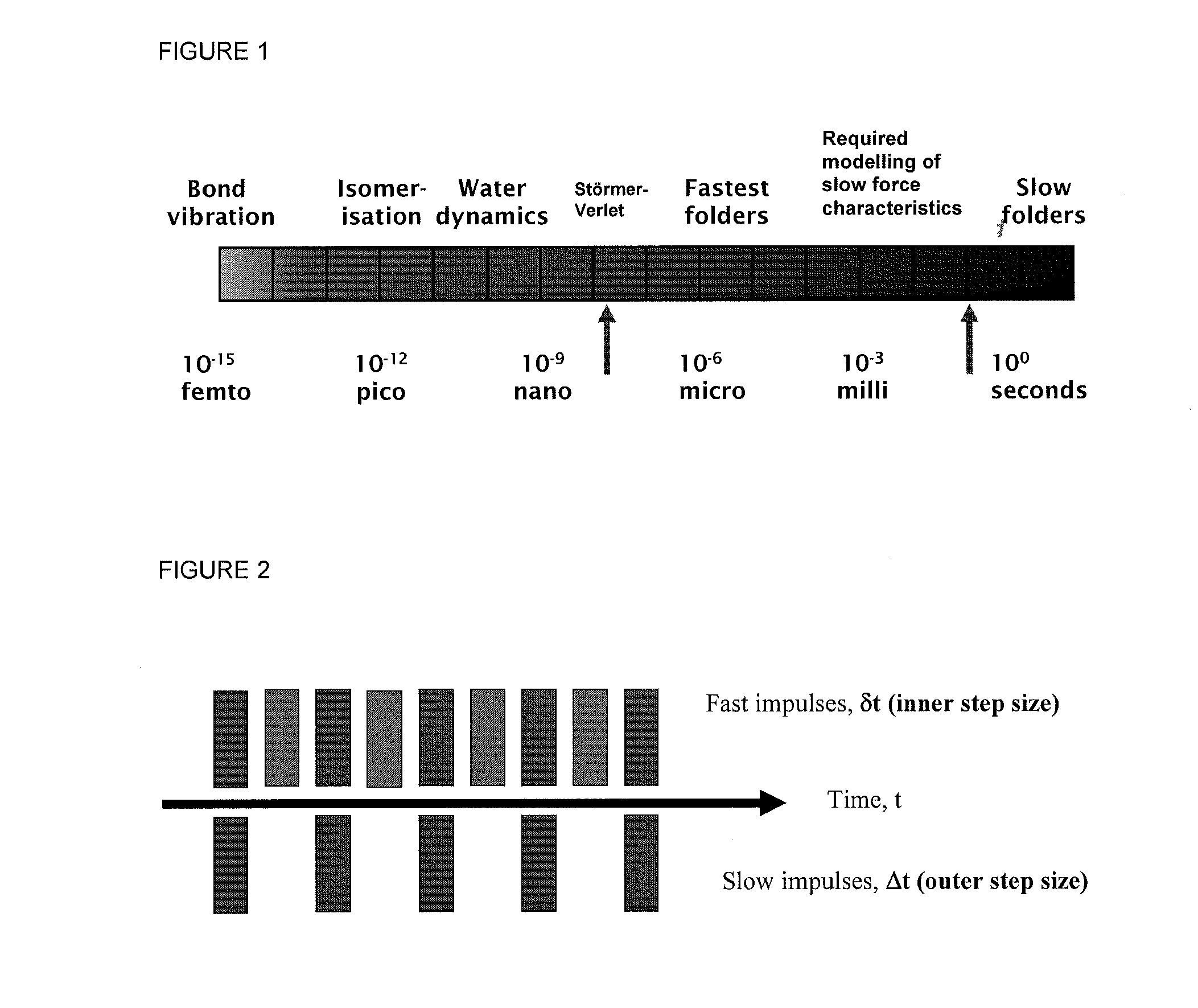Method, apparatus and computer program for multiple time stepping simulation of a thermodynamic system using shadow hamiltonians
a thermodynamic system and shadow hamilton technology, applied in the field of thermodynamic system simulation, can solve the problems of small time step size of conventional md, affecting time-dependent quantities, and affecting the application of md, so as to reduce or at least mitigate some bottlenecks of existing multi-scale methods, accurate reproduction of thermodynamic and dynamical properties, and computational robustness and efficiency
- Summary
- Abstract
- Description
- Claims
- Application Information
AI Technical Summary
Benefits of technology
Problems solved by technology
Method used
Image
Examples
Embodiment Construction
[0097]The generalized shadow hybrid Monte Carlo (GSHMC) algorithm of Akhmatskaya and Reich, 2008 and Akhmatskaya et al., 2009 for sampling with respect to the shadow canonical distribution
{tilde over (ρ)}canon∝exp(−βHΔt) (36)
is defined as the concatenation of two MCMC steps: a molecular dynamics Monte Carlo (MDMC) and a partial momentum refreshment Monte Carlo (PMMC) step. Two key novel steps of the proposed MTS-GSHMC method are the implementation of an extended mollified impulse MTS method (20)-(21) and importance sampling with respect to a shadow Hamiltonian HΔt. We now summarize the proposed MTS-GSHMC method.
[0098]The accepted states of the MTS-GSHMC method are denoted by Ωi=(YiT,ti)T, i=0, . . . ,I, where I is a given integer, Yi=(XiT,1,PiT,b,)T, Xi is a collective vector of atomic positions, Pi is a collective vector of atomic momenta, bi is a scalar, and ti is time. Note that the definition of Ωi is different from the one used for the MTS-GHMC method in the co-pending applic...
PUM
 Login to View More
Login to View More Abstract
Description
Claims
Application Information
 Login to View More
Login to View More - R&D
- Intellectual Property
- Life Sciences
- Materials
- Tech Scout
- Unparalleled Data Quality
- Higher Quality Content
- 60% Fewer Hallucinations
Browse by: Latest US Patents, China's latest patents, Technical Efficacy Thesaurus, Application Domain, Technology Topic, Popular Technical Reports.
© 2025 PatSnap. All rights reserved.Legal|Privacy policy|Modern Slavery Act Transparency Statement|Sitemap|About US| Contact US: help@patsnap.com



